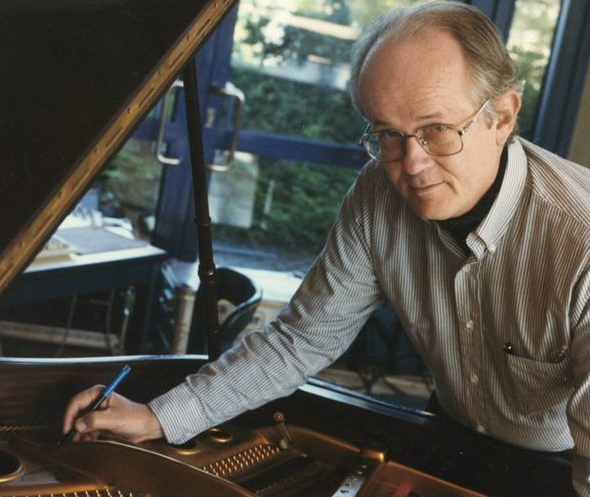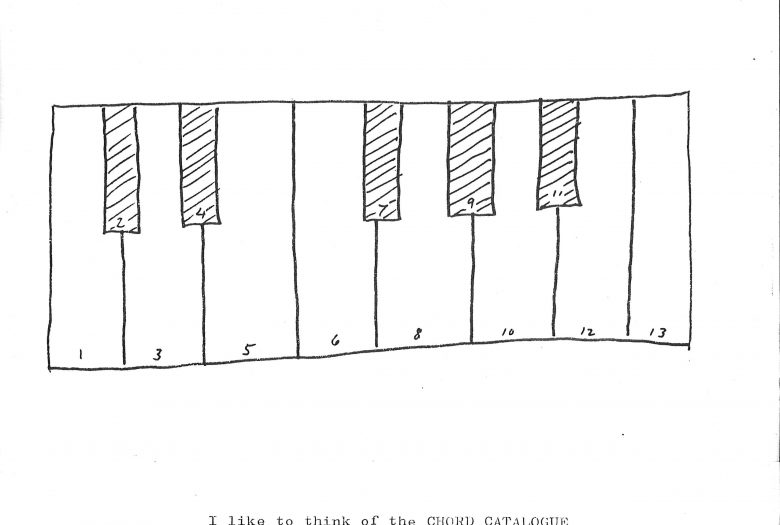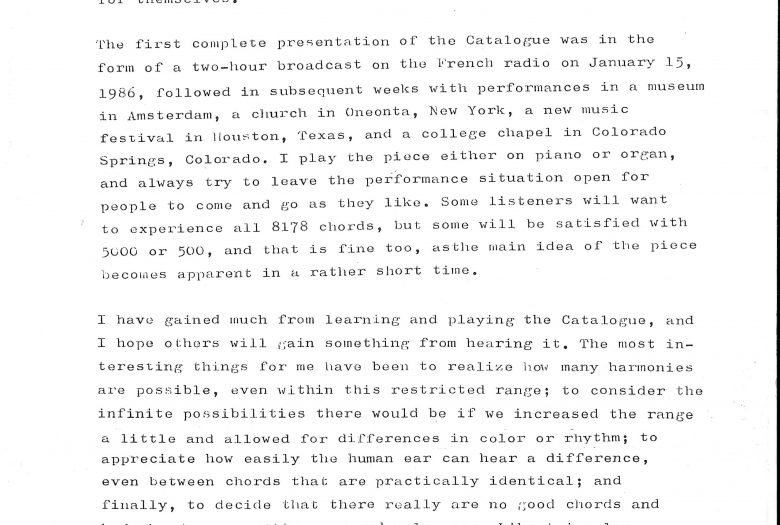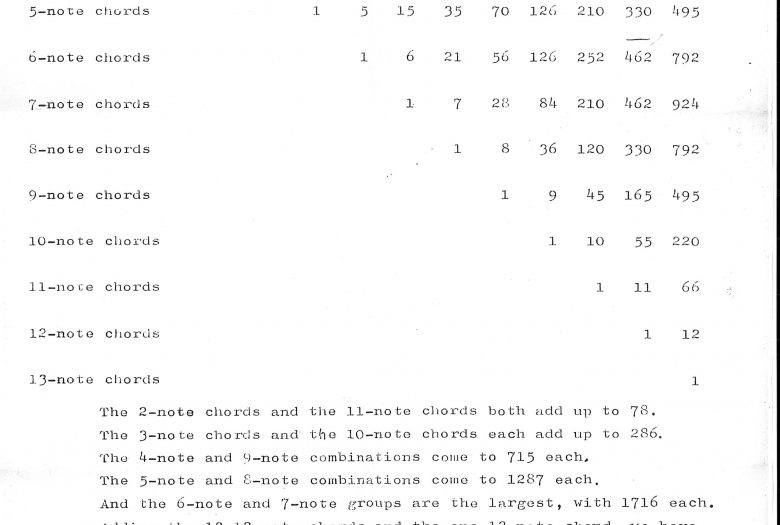The legendary minimalist, conceptualist, and critic performed his marathon piece “Chord Catalogue” the 8,178 chords possible in one octave, played in sequence.
Shown here, the 1987 NY Times review by Bernard Holland and the “score” and essay by Tom Johnson.
NOTE: The audio recording is interrupted briefly at the 74 minute point as the original recording media capacity was reached and the tape was changed.
Tom Johnson (born November 18, 1939), is an American minimalist composer, a former student of Morton Feldman.
Tom Johnson was born in Greeley, Colorado. He received two degrees from Yale, the B.A. (1961) and the M.Mus. (1967), after which he studied privately with Morton Feldman in New York. From 1971 to 1983 he was a music critic for The Village Voice, writing about new music, and an anthology of these articles was published in 1989 by Het Apollohuis under the title The Voice of New Music. During this New York period he also composed four of his best known works: An Hour for Piano (1971), The Four-Note Opera (1972), Failing (1975) and Nine Bells (1979). After 15 years in New York, he moved to Paris where he lives with his wife, the artist Esther Ferrer.
Johnson considers himself a minimalist composer, and in fact, he was the first to apply this term to music in his article “The Slow-Motion Minimal Approach”, written in The Village Voice in 1972. His minimalism is of a formalist type, depending mostly on logical sequences, as in the 21 Rational Melodies (1982), where he explores procedures such as accumulation, counting, and isorhythm. Some have even said that he is the inventor of logical music.





